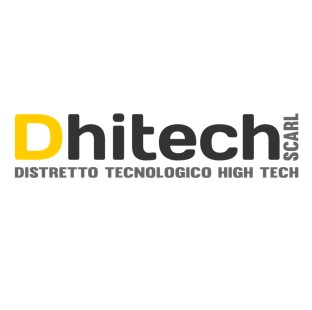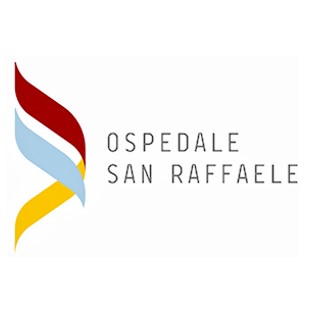Teaming up for Innovation
The partnerships within the Translational Medicine Living Lab have their roots in years of productive collaboration that produced high value intellectual properties and a sparkling energy to the Apulia territory that had the chance to challenge itself against the highest standard science and technolog. Thanks to the Innovation Engineering Department of Università del Salento, several collaborations with the opinion leaders of the Tissue Engineering field have been estaablished and back in 2004 one of the excellence in Translational Medicine, such as Ospedale San Raffaele, has been brought by the Biomaterials Laboratory of Innovation Engineering Department for the very first time to work with the Apulian talents. For the RINOVATIS project this network has been extended. Partecipation to the Living Lab is open to all those public and private subjects interested and motivated in supporting Translational Medicine and the development through such sector of the Apulia region.
Click on the partner logo to learn more.
CNR

The National Nanotechnology Laboratory (NNL) is a research center of CNR Institute of Nanoscience and is currently one of the largest interdisciplinary laboratories about nanotechnology at the European level. The NNL center is organized on an area of about 1000 square meters divided into five sections: 1) Clean room; 2) Biology Laboratory; 3) Chemistry Laboratory; 4) Scanning Probe Laboratory; 5) Laboratory of magnetism, low temperatures and transport.
All sections are equipped with innovative instrumentation, among which we point out: a nanofabrication facility with electron beam lithography systems, nanospotter for microarrays manufacture, electrochemical workstation, scanning probe microscopes, chemistry lab equipped with extractor hoods for the synthesis of inorganic nanoparticles and glove box, a TEM, spectrofluorometer (equipped with all the accessories for cooling the sample, TIRF and Time-resolved spectroscopy), two-photon confocal microscope, an area for the growth of cells and tissues, a cold room of 16 square meters and a cryomagnetic lab.
The Nanobiomolecular Electronics and Nanobiotechnology (NEN) division works for more than 10 years at CNR NANO and has extensive experience in the areas of device fabrication and materials micro- and nano-structured by means top-down and bottom-up techniques, as well as in the characterization of the interactions between molecules and biomolecules with structures / inorganic devices with the aim to create and exploit new architectures and new hybrid devices for fundamental studies and applications in nanoscience and health science.
[WEBSITE]
Dhitech
Dhitech Scarl primarily works on projects of Applied Research and Training, funded under the Regional, National and Community actions in support of Technological Innovation. District Strategic goal is the creation of a critical mass of actors of the development, including innovators / entrepreneurs who are able to promote and implement the innovation of the production system through the creation of new High -Tech business/company.
During the “RINOVATIS” project, Dhitech has designed and built a Living Lab at the regional level, in the Tissue Engineering and Regenerative Medicine area which ensured the correct information flow between the various partners. DHITECH also provided skills on the process of synthesis of biomedical devices and analysis of the procedures related to it (eg packaging, sterilization, CE marking, validation of quality systems).
[WEBSITE]
Università del Salento
The Biomaterials Laboratory of Innovation Engineering Department (DII) of Università del Salento is one of the nodes of the National Network of Tissue Engineering (TissueNet), and boasts numerous national and international collaborations relating to the development of the macromolecular scaffolds for regenerative medicine, with particular emphasis on Regeneration of the peripheral and central nervous system and on the regeneration of osteochondral tissues. The research team has laboratories equipped for the study of the mechanical, thermal, rheological and morphological properties of materials, in addition to a clean room 100.000 class with 10,000 class modules and a laboratory for chemical synthesis, facilities of scanning electron microscopy (SEM and eSEM), atomic force microscopy, confocal microscopy, X-ray diffraction, NMR even Solid State, FTIR (also for imaging), UV visible spectroscopy, laser light scattering and porosimetry.
The Biological and Environmental Sciences and Technology Department (DiSTeBA) with his Clinical Proteomics laboratory is active in research and identification of Specific Markers for early diagnosis of oncological, degenerative and autoimmune and microbiological pathologies and in monitoring therapy aimed at the preparation and implementation of custom Drug Treatments, thanks to anche Direct collaboration with the ASL (Azienda Sanitaria Locale- Local Health District) of Lecce.
[WEBSITE]
Engineering
Today the Engineering Group SpA expresses almost the 7% of the domestic IT market share and represents one of the major Italian firms in Information Technology services with a positioning that places it among the top 3 national operators and is the first Italian system integrator with an integrated and complete offer about the services, projects and IT consulting. Engineering will be involved in projects primarily through its Research and Development Laboratory. The Laboratory can count on a team of 250 researchers and over 4 development structures; the last three years, Engineering has invested about 50 million of euro in reference to the research activities. The main research areas, in which the laboratory is to be involved and that are in line with the objectives of the district and the project, can be summarized as follows: Service Oriented Architecture, Service Design, Service Engineering and Services in mobility, User Experience and new models for the user Interaction, innovative Paradigms for public and private organizations, Intelligent Systems, Business Process Design and Systems Management, Social Networking.
[WEBSITE]
Università di Bari
Università di Bari and in particular The Plasma Chemistry Laboratory is firmly established by the time the fabric of European and International Plasmas Chemistry Research, by virtue of participation in European research projects, scientific collaborations, students and researchers exchanges. The modification via polymers 'cold' plasma and the deposition of polymer films is a field of materials science exponentially growing because of its many industrial applications. The materials treated via plasma in fact show peculiar properties of chemical inertness, hardness, refractive index, wettability, compatibility with the blood plasma and resistance to bacteria that make them indispensable in strategic sectors such as agro-food (packaging) and medical (biomaterials).
The Researchers at the plasmas chemistry laboratory are part of the following networks:
- International Plasma CoE Network - Thirteen Centres of Excellence in various countries: France, Germany, Japan, Ireland, Italy, Netherlands, South Korea, UK, US;
- COST (Cooperation for Science and Technology) on the surface modifications via plasma;
- PLASMATECH: research centers and companies in the plasma chemistry processes in the areas of Health, Textiles, Food and Environment;
- INSTM - National Institute of Science and Technology of Materials sections "Thin Films" and "Biomaterials";
- CRISMA - Interuniversity Center of Advanced Medical Systems: University of Siena, Bologna, Milan, Naples and Bari for research on biomaterials.
[WEBSITE]
Ospedale San Raffaele
San Raffele Hospital (OSR) is recognized as a excellence center for the business of providing health and for scientific research in the Molecular Medicine context. OSR has as main purpose the transfer of knowledge gained from basic research to clinical research and possibly applied to clinical practice. In fact OSR provides the surgical, clinical and of analysis skills, as well as the definition and implementation of experimental protocols “in vitro and in vivo” with the collaboration of its units of Neuropathology and Neuroimmunology and his "Tissue Engineering and Biomaterials Laboratory".
The San Raffaele Biomedical Park includes:
- San Raffaele Hospital
- San Raffaele Research Institute (DIBIT), head office of the San Raffaele Telethon Institute for Gene Therapy (HSRTIGET), the Stem Cell Research Institute (SCRI) and the Experimental Neurology Institute (INSPE) with Director Prof. G. Comi.
- San Raffaele Vita-Salute University.
- Science Park Raf SpA, which is as an interface between the Foundation and the companies in the field of life sciences, banks and venture capitalists with a mission to create value from the expertise, intellectual property, internal human resources and facilities for the research.
[WEBSITE]






